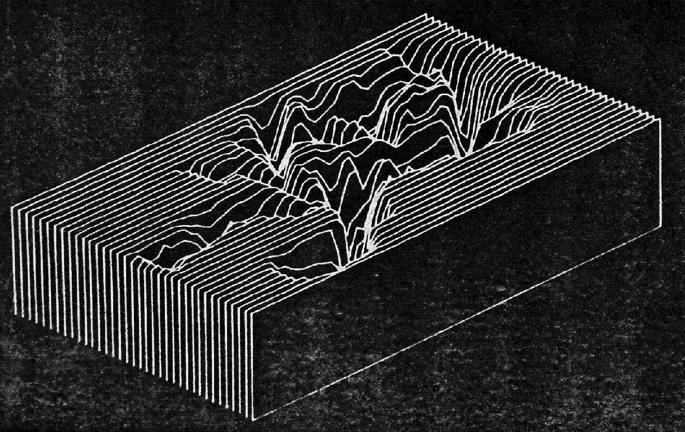|
 Figure 5. 3-D Display of Surface Defining Base of Sediments Map generated in 1974.
Figure 5. 3-D Display of Surface Defining Base of Sediments Map generated in 1974.
This experience was also tied to my first serious efforts to
reconcile the 7 days of creation, as recorded in Genesis, with geologic processes, as
understood by scientists. After all, there was a specific geologic event, the formation
of the Yellowstone caldera, a collapsed volcanic crater, and subsequent sedimentary
layering of muds and sands carried into the crater.
Quoting from my senior thesis:
|
"Based on paleomagnetic logging of shallow
cores the sedimentation rate has been calculated to be a maximum of 18.7 centimeters per
100 years. This is 0.187 centimeters per year, or 0.0709 inches per year. The deeper
parts of the Old Yellowstone River Channel have about 650 feet of sediment. Using the
sedimentation rate above, the deeper parts of the channel would have started forming
110,000 years before present, if the sedimentation rate were constant. However, it is
highly unlikely that the sedimentation rate has been constant over that long of a time
period. This sedimentation is due, principally, to diatom deposition. This type of
organic deposition would not have occurred at this rate during periods of glacial cover.
Both the Bull Lake and Pinedale glaciations occurred during the last 110,000 years, and
would have reduced the diatom deposition rate. Glaciation could, on the other hand,
speed up the sedimentation rate by producing large deposits of glacial till and by rapid
deposition of glacial till wished into the channels as mud flows."
|
What does this mean? It means these calculations demonstrate
sediments deposited in this one recent lake imply the earth is much older than 7,000
years. Yellowstone Lake is a nice starting place for exploring the science - religion
matrix, specifically because it is a closed geologic system, at least since the
formation of the caldera.
|